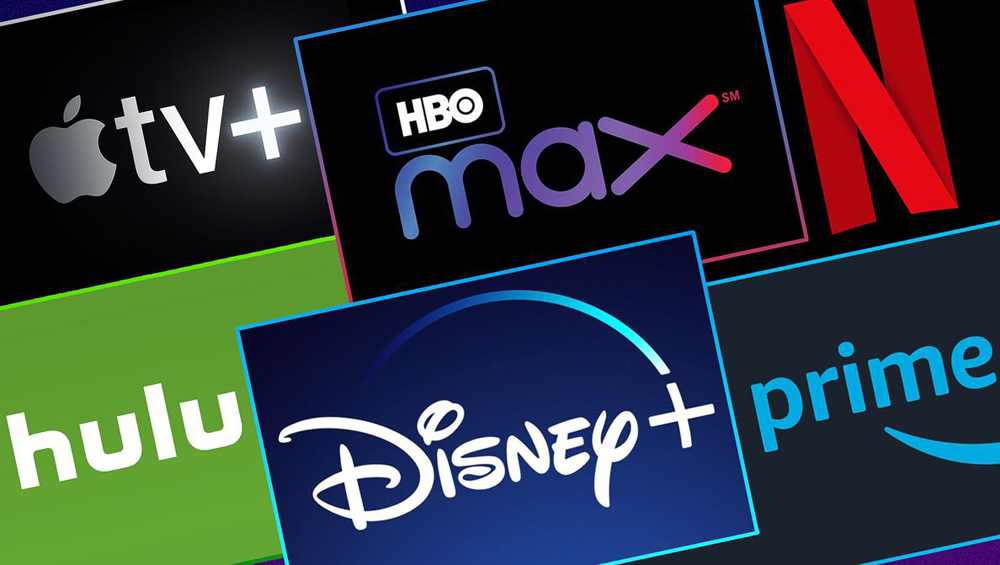
The Big Shakeout Of 2023


Hank Price
By any measure, 2022 was a seminal year. It was the year every major media company decided to go all in on streaming, only to learn there were not enough willing subscribers to go around. It was the year advertising revenue was rediscovered as the wave of the future, but without a clear picture of what that actually means. It was the year cord cutting reached a tipping point, creating layoffs and an uncertain future for the traditional cable network owners. It was also the year the Federal Reserve began to significantly raise interest rates, adding a wild card that could upend the industry.
In short, 2022 set up the coming shakeout of 2023.
Streaming’s Bottomless Pit
Big media has a profitability problem. According to business writer Madeleine Bruder, media groups shed $500 billion in stock value last year. How did such a thing happen?
Last year began with an Oklahoma land rush to streaming at the expense of everything else. Even the traditional television networks chose to discount their long-term affiliate relationships, along with the billions of dollars in program payments that come from those affiliates, in favor of a total concentration on streaming.
This belief in streaming as a holy grail was not driven by viable business plans, nor even a sense that consumers had lost interest in all other platforms. Instead, the major media companies thought Wall Street would reward the price of their stocks based on some hoped-for pot of OTT gold.
Those hopes were dashed when Netflix and Disney, both cherished darlings of Wall Street, saw falling stock prices due to a combination of subscriber lag and greater-than-expected churn.
By mid-year both Paramount+ and Peacock were seriously underperforming expectations. One analyst predicted Paramount’s streaming service would never be able to replace traditional network revenue. If constant promotion on CBS and NBC could not create streaming bonanzas, what hope did players such as Warner Bros. Discovery have?
Hope Turns To Advertising
Suddenly, advertising revenue took on new meaning. By the time last year’s upfront presentations came around, advertising was back in vogue and agencies were treated to the usual promises from the usual suspects. We won’t go into detail in case you just finished breakfast.
By the end of the year, confusion reigned. NBC in particular had egg on its face for signaling a giveback of the 10 p.m. hour to affiliates, then hesitating at the last minute. It is significant that the announcement of a possible delay was not made by senior NBC executives, but by their advertising sales department.
As we enter 2023, advertising revenue is the latest magic bullet that will solve all problems, bring peace to the world, and help us lose those 10 pounds we gained over the holidays.
The problem with advertising as a panacea is that the national market is finite, fully dependent on client and agency budgets. With so many new players now seeking a piece of the pie, there will not be enough money to satisfy everyone. The market, which has been fragmenting for the past two decades, will fragment even further.
Anyone who has sold national advertising also knows it is a tough, numbers-centric game that demands a guaranteed audience or your money back. Netflix learned this the hard way when its new ad-supported tier did not meet expectations. To add insult, Netflix’s stock price dropped even further for the same reason.
Just as streaming was not the answer to all problems in 2022, neither will national advertising be the ultimate solution in 2023.
Look For Discounts To Build Numbers
Whether counting subscriber fees or selling advertising, the bigger problem for streamers now is relevance. To make it through this year intact, providers must find ways to add eyeballs.
Just last week AT&T offered me a free subscription to HBO Max as part of my existing fiber internet plan. Look for other offers to come your way. Mine came by old fashioned snail mail.
Speaking of old fashioned, Disney has been running spots for a discounted Disney+/Hulu package on CBS’s television network, proving the point that when all else fails, do what might actually work.
Having stubbed its toe launching an ad tier, one also wonders how seriously Netflix will enforce its goal of reducing password sharing. Perhaps sharers would be willing to watch limited commercials?
Higher Interest Rates Increase Debt
Cratering stock prices are bad. Billions in debt can be even worse.
During the era of cheap interest rates, borrowing money was not a problem, but we no longer have cheap interest rates. Moreover, it is not only new acquisitions that will be affected. Long-term fixed rates are a thing of the past.
How much will higher interest rates affect media in 2023? It’s too early to judge, but the cable network layoffs we saw at the end of 2022 were not exclusively due to cord cutting. In 2023, interest rates will factor into every major decision.
Recession Affects All Media
With the Fed now signaling higher interest rates throughout this year, consensus has moved from “Will we have a recession?” to “How long and how deep?”
Prior to the last recession, media companies demonstrated a remarkable ability to weather economic storms. Belts were tightened, layoffs occurred, but in general media was a high margin business that seemed bulletproof. That is no longer the case.
Increased competition from all quarters, higher levels of debt and loss of spot dollars almost caused the last recession to be a game changer. As one station group head said at the time: “This might finally thin the herd.” That did not happen because of a newfound willingness to finally charge cable and satellite companies for retransmission of television signals. Retransmission fees saved the station industry as well as network owners. No such windfall is on the horizon in 2023.
Remember also that during the last recession television station owners slashed costs, permanently eliminating photographers, master control operators, production staff and many other jobs. Any cutting this time will require a bone saw.
Depending on how deep and how long it lasts, a 2023 recession might actually “thin the herd.”
Mega Mergers
Industry upheaval always creates leaders and losers. When that happens, look for consolidation to follow.
Wells Fargo’s recent prediction that Disney might shed both ABC and ESPN may have touched off the rumor mill, but it was only the beginning of coming speculation about any number of players. We don’t know who might buy whom, but we do know there are no public companies so successful, so secure, that an acquisition would be out of the question.
Look for disruption particularly among the cable network owners, whose properties have traditionally generated large cash flows. Those networks are now feeling the crunch of cord cutting. Streaming services and even television station owners are also suffering the bite of subscriber losses. A recession will accelerate those trends, lowering subscriber revenue along with retrans fees and network program payments.
And don’t forget the three wild card players: Google, Apple and Amazon.
When considering potential media acquisitions, one must also keep in mind that under the current administration both the FCC and the Department of Justice are likely to be merger averse, so swallowing up competitors will not be easy.
Consumers Assert Control
As businesses historically based on a top-down, gatekeeper mentality, it’s difficult to accept the fact consumers have now taken full control of the future. To understand 2023, let’s consider a few of the things we know about today’s consumers.
- They are willing to pay a premium for brands important to them but expect commodity pricing for everything else. Though increasingly rare, brand loyalty is the single most valuable attribute any media company can hope to achieve.
- Most consumers understand that watching commercials is a form of payment and are willing to do so on a reasonable basis, but they hate extended breaks. Television stations, cable networks and ad-supported streamers alike will do well to keep this in mind.
- Consumers constantly interact with a wide range of media, from music services to shopping sites. This matters because the real competition among media providers will be for consumer time.
- Today’s consumer is a savvy shopper who works the system, subscribing to and dropping pay services at will. Consumers are also keenly aware of their total monthly media costs and factor that knowledge into every subscribing decision.
The bottom line for 2023 is that consumers will determine who survives, who fails and who breaks out as the next runaway success. As my friend Professor John Lavine is fond of saying: “If you want to know the future, look to the self-interests of the people involved.”
Who will lead and who will lose in 2023? As this year unfolds, watch consumer behavior to find out.
Hank Price is a media consultant. His second book, Leading Local Television, has become a standard text for television general managers. In a 30-year general management career, Price led TV stations for Hearst, CBS and Gannett, including WBBM Chicago, KARE Minneapolis, WVTM Birmingham, Ala., and both WXII and WFMY in Greensboro/Winston Salem, N.C. Earlier, he was a consultant with Frank N. Magid Associates. Price also spent 15 years as senior director of Northwestern University’s Media Management Center. He is currently director of leadership development for the School of Journalism and New Media at Ole Miss.


































Comments (0)